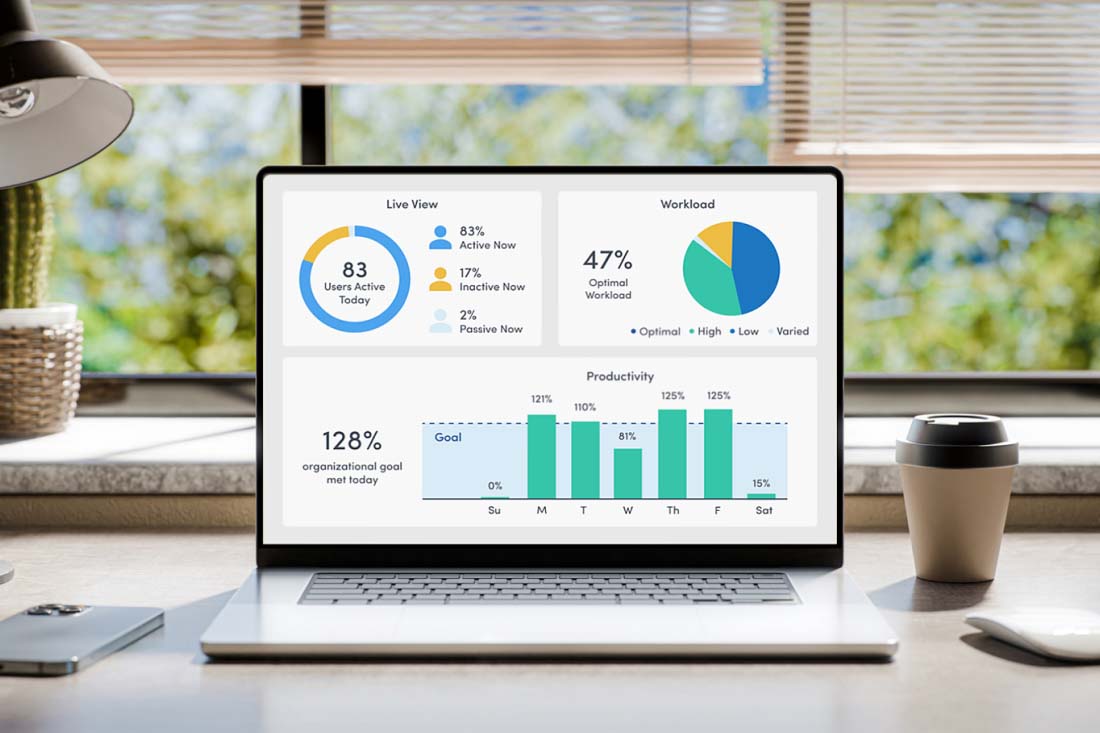You’ve probably heard that data is the new currency in business. Data is a valuable asset that drives decision-making, enhances operational efficiency and provides a competitive edge in the market. To manage data effectively, organizations need to develop a strong data culture.
In this post, we’ll discuss the concept of data culture and its role in business success along with steps for you to establish a strong data culture in your organization.
What is data culture?
Data culture is the attitudes, behaviors and processes in an organization that prioritize using data to drive decision-making and business outcomes. Most organizations have at least a passive data culture, where they collect data and maybe use it from time to time, when it’s convenient to do so. But a mindful data culture creates an environment where data is valued and integrated into every aspect of the organization’s operations. A strong data culture enables employees at all levels to understand and use data effectively.
Creating a mindful, active data culture is more than just implementing data analytics tools and technologies. It requires a shift in mindset and a commitment to data-driven decision-making from the top down. Organizations with a good data culture encourage their employees to ask questions, challenge assumptions and seek evidence to support their ideas. They understand that data is not just a byproduct of business operations, but a valuable asset that drives innovation and growth.
Data culture goes beyond individual departments or teams. Every employee at an organization – from the top-level executives to the front-line employees – needs to have access to data tools and be empowered to use them. This requires collaboration and communication across different functions and levels, breaking down silos and promoting a shared understanding of data and its potential to shape and improve business performance.
The pillars of data culture
When building a strong data culture in your organization, several pillars can set you and your team members up for success.
1. Data literacy and education
- Data literacy is the ability to read, understand and effectively communicate with data.
- Organizations should invest in training programs and resources to enhance data literacy among their workforce.
2. Data governance and privacy
- Data governance frameworks ensure data is handled with a mind to security, quality and compliance.
- A strong data culture includes data governance practices that determine clear policies and procedures for managing data, including how employees use data and how customers can know their data is secure.
3. Data search and discovery
- Employees have the right tools to access relevant data and conduct data analysis to inform decisions at the right time.
- Organizations invest in updated, easy-to-use tools to provide employees with the data they need.
4. Data accessibility and sharing
- A data-driven organization needs to access and share data across departments and job functions to create a unified data culture.
- Data-driven cultures encourage transparency and collaboration so all team members contribute to decision-making processes across the board.
5. Responsibility and commitment
- All employees – including leadership and management – are committed to building an organizational culture that fosters good data practices and usage.
- Businesses should include data-focused roles in every department, including chief data officers and data scientists to build a data culture throughout the organization.
Why data culture matters
Data culture is more than a buzzword – it has a critical impact on business success. The data is clear on how a strong data culture can benefit a business:
- Forrester reports that organizations with a strong commitment to data are three times more likely to experience double-digit growth.
- A study by McKinsey & Company showed organizations with a data-driven culture are:
- 23 times more likely to acquire customers.
- Six times more likely to retain customers.
- 19 times more likely to be profitable compared to their industry peers.
The process of building a data culture also benefits your organization from within, leading to greater transparency, better communication and greater purpose throughout the business. It empowers employees to make data-informed decisions and empowers your business to be agile and responsive. Organizations that don’t embrace and learn how to manage Big Data will fall behind.
The impact of data culture: challenges and benefits
Challenges of not having a strong data culture
- Inefficiency: Without a good data culture, leaders and individual contributors can only guess at how their decisions are impacting the organization. Businesses that don’t use data effectively will continue to make the same mistakes or be unable to explain success.
- Lack of accountability: When employees can’t see the factual results of their labor, they can’t take ownership of the problem and work to make meaningful changes. This can lead to disengaged employees and lower productivity.
Benefits of a strong data culture
- Empowered decision-making: When leaders and employees can point to data to say why they’ve decided to move in a different direction, it leads to better buy-in and better outcomes. They can then use change management data to track the impact of the adjustments and see if they’re working or need additional changes.
- Better customer experience: Data gives the organization a better understanding of what customers want, need or experience, which can lead to more proactive decisions around customer service issues.
- Improved productivity and engagement: Data gives employees better goals to work towards and a clearer understanding of how their contributions affect the business, leading to better engagement and productivity.
- Increased flexibility: When the team has access to data as it comes in, they can pivot more readily to make improvements.
8 steps to build a strong data culture
Building a strong data culture requires a strategic approach. Here are seven steps to guide your organization in building a better data culture.
1. Cultivate a data-driven mindset
Promote the value of data and encourage employees to seek data-driven solutions. Leaders set an example by championing data culture initiatives and modeling curiosity. The organization also develops data use policies and procedures to include data in every aspect of the business. Every employee understands what data is important to the company and why data can help them.
2. Implement the right tools and technologies
Every organization has different data needs, but the right tools and technology boost your ability to use data throughout the organization. Make sure any tool you implement is easy to use and understand with proper training courses and support. Find out which tools your most successful competitors are using to see if they may give your organization a boost in data culture.
3. Encourage continuous learning and improvement
Train employees on all new technologies and tools from implementation, but also make data training a part of new employee orientation. Ask employees to seek out tools that help them make better data-informed decisions and offer certification training on an ongoing basis.
4. Address issues quickly
When data collection or use processes don’t work, fix the problem. Whether it’s blind spots, the wrong tool for the job or there’s a block in access – ensure that your IT team or data analytics team is equipped to address the issue. This may mean providing different access levels to different teams. For instance, marketing teams may need different data than production teams.
5. Look inward
Use data to create better products and services for customers, but it’s also important to use data to improve employee processes, performance and experience as well. Using tools like ActivTrak’s workforce analytics provides insight into how employees work best, where they do their best work and which apps or tools are most effective. It also shows where processes or tools may be failing employees or which team members need more training or support.
6. Empower explanation
Leaders and employees alike need the space to explain their decisions and choices. Provide forums for team members to explain how they came to their decisions based on data to increase buy-in across the organization. This is also an opportunity to teach other team members how to use data more effectively in their work. Finally, it provides cross-departmental communication on different data sets and how they inform the bigger picture so that individual teams can be accountable for their successes or failures without bogging the entire organization down in too much detail.
7. Embrace flexibility
Data can give us information we’re not ready to hear, especially when it comes to pet projects or ideas. Be prepared to change course when the data clearly says to do so. When an employee can offer a new solution based on data, encourage exploration of the changes and how to implement them rather than shutting it down because it’s “not how we do things.”
8. Celebrate successes
While teams are sharing ideas and solutions, leadership should also be rewarding success when it comes to data culture. Celebrate data culture successes, no matter how small. Whether it’s a single employee learning to use a new analytical tool or a team solving a major problem in a new way, make every success story a headline in your organization’s highlight reel.
How to overcome challenges in building a data culture
Address data quality issues
“Garbage in, garbage out” is a common saying among data analysts, and ensuring good outcomes means sifting through a lot of noise to find the right data and analysis. Inaccurate or incomplete data can lead to flawed insights, misguided decisions or confusion. Implement data quality assurance processes, such as data cleansing and validation, to ensure data integrity and accuracy. Etablish clear quality metrics and accountability mechanisms to help maintain data integrity over time.
Involve employees
Building a strong data culture requires a shift in mindset and you may encounter resistance from employees or even leaders who don’t want to change. Communicate the benefits of data culture clearly and consistently, addressing concerns and providing support throughout the transition — including listening to feedback. By involving employees in the process and highlighting success stories, you can overcome resistance and create a culture where data is embraced rather than feared.
Maintain consistency
Because different departments require different data, it can be easy to fall into a pattern of data tribalism. Different tools, different data sources and different interpretation methods can wreak havoc on your company’s ability to make decisions or share information. It’s important to establish a set language when it comes to metrics, programming and analysis to make data sharing and decision making easier throughout the organization.
Build a strong data culture with ActivTrak
Leverage ActivTrak’s workforce analytics to drive data-driven decision-making, enhance operational efficiency and foster employee productivity and well-being. Use insights across people, processes and technology to inform internal and external business processes around how you collect and use data. Empower employees with data about their work schedules, productivity and distractions, and give managers more information into training, workload balance and performance evaluations. Request a demo and take the first step toward a more robust data culture.





